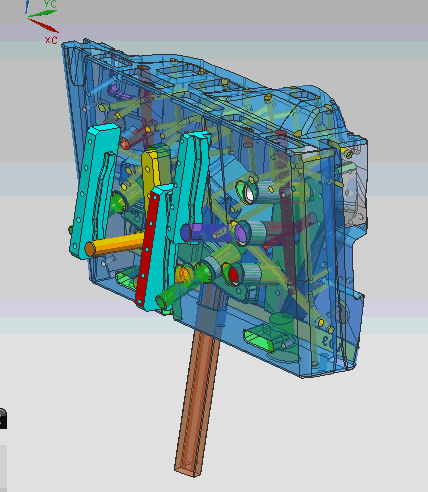With the development of automobile industry, automobile bumper, as an important safety device, has also come to the road of innovation. Today’s car front and rear bumpers not only maintain the original protection function, but also pursue the harmony and unity with the car body shape, and the pursuit of its own light weight. In order to achieve this purpose, the front and rear bumpers of the current cars use plastic, people called plastic bumpers.

Design concept: 1.
1. Meet the regulatory requirements
Crash performance requirements: 2.5MPH BUMPER (ECE R42).
Pedestrian protection performance requirement: EEC 70/156.
External protrusion requirements: ECE R26. 01, EEC 79/488.
2. Meet the effective air intake area of the cooling system
3. Meet the modeling requirements, the overall appearance of the smooth, coordinated
4. Low cost, light weight, recyclability of materials
5. Process feasibility, the principle of easy disassembly and assembly
Material and structure of bumper
Bumper materials require good rigidity, good impact resistance, good dimensional stability, good solvent resistance and good painting performance in a wide temperature range. Commonly used >PP+EPDM-T20.
The bumper cover and crossbar are large thin-walled injection molded parts, and the cover is also an appearance part, so the material should have good fluidity and high precision and UV stability. In the structure design, the geometry and molding method should be integrated to design, bumper mold parting surface should meet the molding process is good, parting line as far as possible on the non-appearance surface. In the design of plastic parts, in order to avoid the stress concentration at the corners, should use the arc transition, which is very favorable for the mold manufacturing life, the general plastic parts should have 0.5-1mm rounded corners at each connection, and the corners should also use some rounded corners to reduce the stress and ensure that the wall thickness is consistent.
Wall thickness – the wall thickness of the parts generally strive to uniform, otherwise it will cause uneven shrinkage due to different curing or cooling rates, resulting in internal forces, resulting in warpage deformation or shrinkage of the parts. Release angle – plastic parts must be considered in the design of the release angle, to avoid the release angle of zero or negative angle.
Post time: Feb-18-2022

